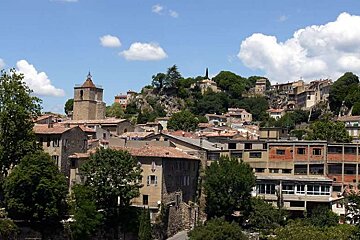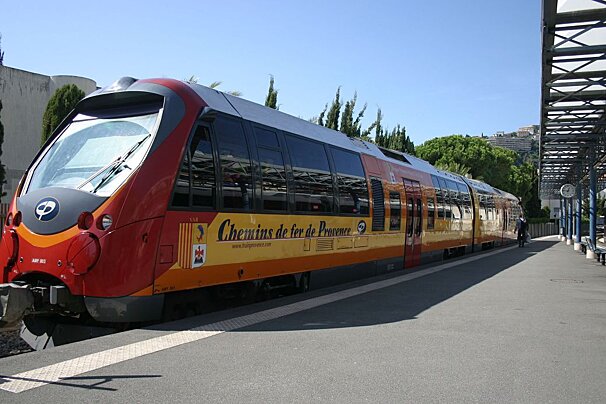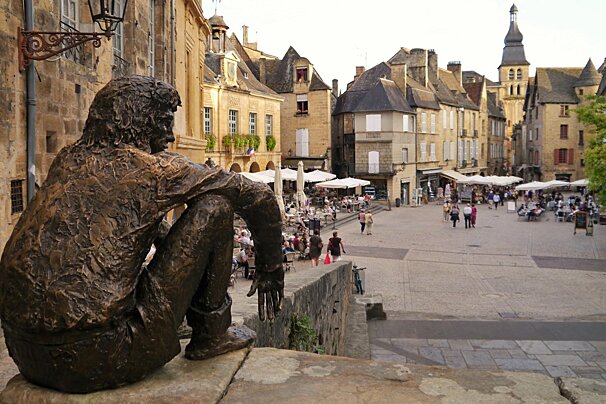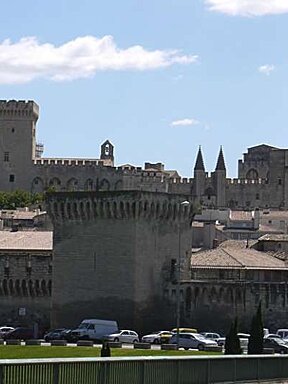
© Seeprovence.com
Barjols
Traditional rural town in the heart of Provence
Barjols is a charming town in the centre of Provence Verte - green Provence - and is well known for its abundant water sources. With 43 fountains and lavoirs (communal wash basins) it shows off the richness of this liquid gold, all year round.
Located just to the south of the Verdon National Park, at the head of a valley that allows for lovely views of the Var.
History & Culture in [locality]
With Roman heritage and an active church in the 14th century, Barjols then became known for processing leather.
In the 19th century, the village was home to 24 tanneries, 19 tan mills, three paper mills, and a card manufacturing factory. This was a time of prosperity and it lasted throughout the 20th century where Barjols became renowned for French leather.
Sadly, international competition meant that the tanneries slowly closed down and the last of them shut in 1983. The old tannery buildings have now been converted into artist's workshops.
Above all, Barjols is known for its yearly celebration of Les Tripettes, a bizarre feast that mixes the profane with the sacred. Imagine attending a church mass, which concludes by a joyous dance of everyone in attendance. Flutes and drums provide the music, no-one can resist; even the priest jumps up and down. History tells that in the 6th century an abbot, Marcel, returns from a trip to Rome, where he met the Pope. Soon afterwards he dies and is interred in his monastery near Montmeyan. Because he is well known, people flock to his grave, and miracles are said to have occurred. Marcel is elevated to sainthood and his tomb and relics continue to receive pilgrims from far away.
Then the decline of the monastery begins and in the early 14th century it's not much more than a ruin. The monks have gone; the only person left is the groundskeeper. One night Saint Marcel appears before him, asking the groundskeeper to move his body to a place "more dignified and more religious." The gardien relates his dream to the bishop of Brignolles who consults others in power. Two villages, Aups and Barjols, offer to receive the relics of Saint Marcel.
While the bishop hesitates, wanting to measure the distance between the monastery and each village to know which is closer, the people of Barjols are pushed by those of a nearby village Tavernes (from then on known as les avocats) to take matters into their own hands. The Barjolais listen to the advice and set out for the monastery. The poor guardian had forgotten to lock the door and the removal of Saint Marcel was a cinch.
On the way back to Barjols, the "thieves" meet up with women from the village (les Tripettes), who are busy cleaning the tripe of a slaughtered cow, a yearly ritual to commemorate a time when the village was besieged and famine was near, were it not for a lone cow. The women join the procession back into the village, into the church. There everyone, young and old, celebrates the arrival of Saint Marcel, as well as les Tripettes and their bounty, with utter joy by chanting and dancing.
Ever since, the occasion is celebrated each year with a solemn mass, followed by dancing and a procession through the village where at each stop the authentic flutes and drums play again, the muskets fire into the air and everyone dances and sings, 'San Marcel, San Marcel, les Tripettes, les Tripettes.'
Sights & Attractions in [locality]
Barjols is full of fountains of different styles, shapes and sizes.
It's a fun way to explore the village to discover all these fountains and the other sights and attraction. Try the tourist office for a map so you can follow a trail.
The church - Collégiale Notre Dame de l’Assomption - dates back to the 11th century with various additions from the 13th and 16th centuries.
Events in [locality]
The market takes place on Sunday mornings on La Place de la Rouguière, and there are stalls selling local produce, flowers, clothing and general souvenirs.
On Thursday and Saturday mornings you'll find a food market on La Place Capitaine Vincens.
There is very little other shopping to be had in Barjols.
Things to do in [locality]
At the top of the village on the road towards Drauguigan, you'll find a footpath on the right taking you to the Vallon des Carmes. The walk follows a river featuring many waterfalls until you eventually reach a view point and the main waterfall des Carmes. There are some caves up here too as well as a number of other paths that explore the area.
Other hikes will take you through the surrounding countryside and forests - ask at the tourist office (maps available for a small fee).
There is an outdoor swimming pool open during the summer, and a couple of municipal tennis courts.
Hotels in [locality]
There are a couple of budget options in Barjols, ask at the tourist office. Barjols is probably not a place that tourists would like to stay, it still has a fairly industrial feel and lacks the charm of some other Provençal towns. You might be better staying in Cotignac or the surrounding area and then take a day trip to Barjols.






















